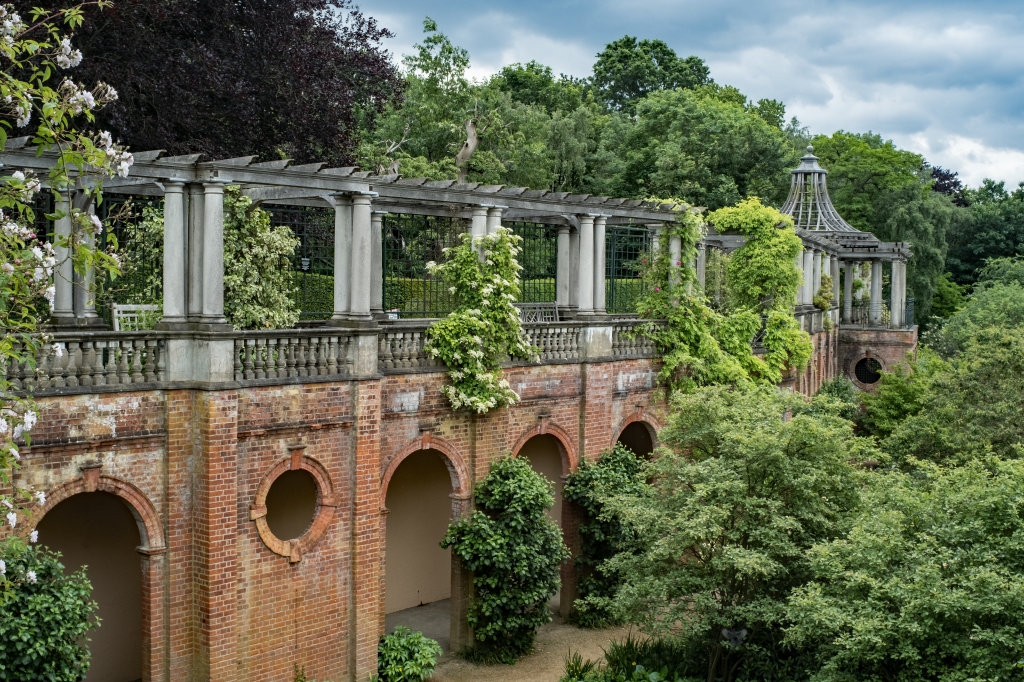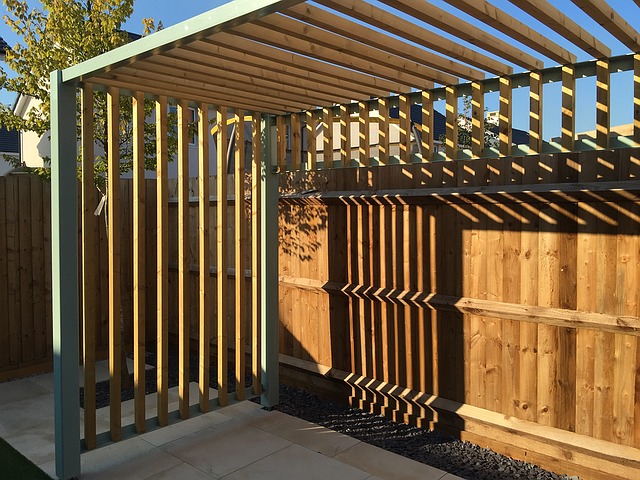Pergola
Contents |
[edit] Introduction
A pergola is a type of garden structure that is typically constructed over an outdoor seating area or walkway. Pergolas are usually made from vertical posts, horizontal cross beams and a lattice roof (that is either left open or closed, although some pergolas are convertible).
[edit] History
The word pergola comes from the Latin word pergula, which translates as projecting eave.
Masonry pergolas were popular during the Italian Renaissance. The idea was adopted by English landscape designers who brought them to England and introduced them into the gardens of their clients.

|
| This structure, designed by Thomas Mawson, is an elaborate pergola located at The Hill in Hampstead. |
Pergolas lost some of their appeal in the 18th and 19th centuries, when it became more popular to elevate the untamed aspects of nature. They regained favour in the 19th and 20th centuries through the designs of Sir Edwin Lutyens and Gertrude Jekyll.
[edit] Purpose
An open (or roofless) pergola is generally used for decorative purposes. Closed (or roofed) pergolas can be decorative as well, but they can also be used as protection from the elements (such as shading from the sun or shielding from the rain). Pergolas are generally open on the sides.
Both structures are sometimes used to support vines, roses or other types of climbing flowers or foliage. Pergolas can be made from timber, plastic, steel, stone or a combination of materials and can be built onto another structure or left freestanding.
Pergolas and arbours are similar, although arbours traditionally feature colonnades of vertical supporting columns.
Pergolas are also similar to gazebos, although gazebos traditionally feature a closed roof.
[edit] Related articles on Designing Buildings Wiki
IHBC NewsBlog
Old Sarum fire in listed (& disputed) WW1 Hangar - Wiltshire Council has sought legal advice after fire engulfed a listed First World War hangar that was embroiled in a lengthy planning dispute.
UK Antarctic Heritage Trust launches ‘Virtual Visit’ website area
The Trust calls on people to 'Immerse yourself in our heritage – Making Antarctica Accessible'
Southend Council pledge to force Kursaal owners to maintain building
The Council has pledged to use ‘every tool in the toolbox’ if urgent repairs are not carried out.
HE’s Research Magazine publishes a major study of the heritage of England’s suburbs
The article traces the long evolution of an internal programme to research 200 years of suburban growth
IHBC Context 183 Wellbeing and Heritage published
The issue explores issues at the intersection of heritage and wellbeing.
SAVE celebrates 50 years of campaigning 1975-2025
SAVE Britain’s Heritage has announced events across the country to celebrate bringing new life to remarkable buildings.
IHBC Annual School 2025 - Shrewsbury 12-14 June
Themed Heritage in Context – Value: Plan: Change, join in-person or online.
200th Anniversary Celebration of the Modern Railway Planned
The Stockton & Darlington Railway opened on September 27, 1825.
Competence Framework Launched for Sustainability in the Built Environment
The Construction Industry Council (CIC) and the Edge have jointly published the framework.
Historic England Launches Wellbeing Strategy for Heritage
Whether through visiting, volunteering, learning or creative practice, engaging with heritage can strengthen confidence, resilience, hope and social connections.














